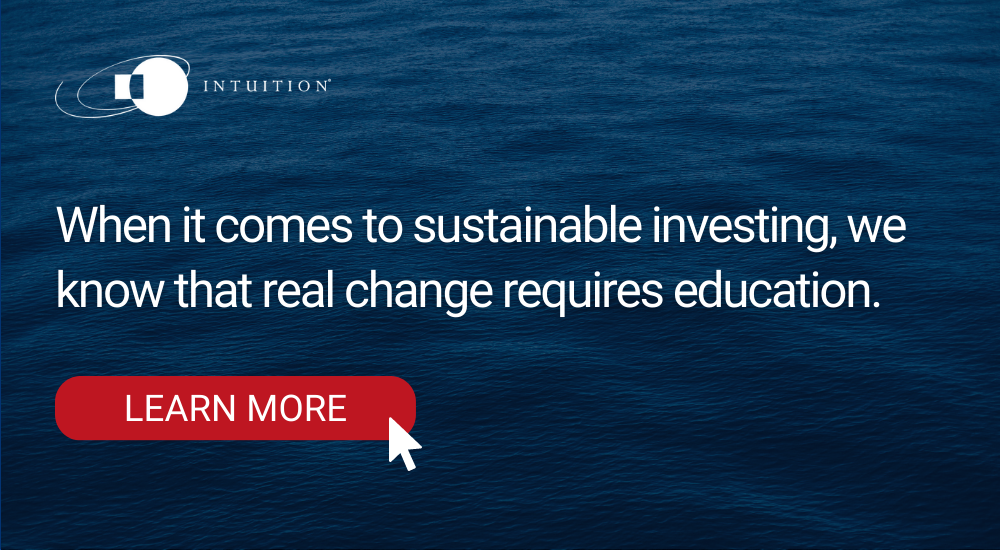Green bonds explained and the different types of green asset
Until recently, many financial market participants may have found climate-related financial risks to be largely abstract. However, it has become increasingly difficult for reasonable observers to deny that there is at least an element of climate change causality behind events such as the catastrophic fires in California and Australia or the floods in Western Europe.
In the face of such events, financial decision-makers and investors are quickly becoming more “climate aware.” For example, institutional investors and banks, which are answerable to end-investors and shareholders, are under growing pressure to present their investing and lending decisions as compliant with emerging environmental, social, and governance (ESG) standards. Large fixed income buy-side institutions are increasingly motivated – or even required – to have a positive climate impact as well as generating financial returns.
As a result of these pressures, financial markets are adapting and changing. In many cases, bonds and other instruments which do not meet relevant ESG criteria trade at a discount to those that do – this gap is likely to widen in the future. Increasingly, investors are allocating resources to instruments that are certified as adhering to certain ESG principles, such as green bonds and other so-called labeled assets (assets that have achieved some type of certification or label associated with ESG characteristics).
As these shifts occur, the market for green bonds and green assets is growing fast. Investors are snapping up new issues and dedicated international climate funds and development banks are looking to support the flow of capital into environmental projects – including the development of green bond markets – using concessional finance, credit enhancement tools, and their own balance sheets.
But what are green bonds and assets, and why do they matter?
[ESG factors explained: Environmental | Social | Governance]

What are green assets?
Green assets are financial instruments that raise funds which will be used to finance environmentally beneficial or “green” projects or business activities.
Green projects may include building renewable energy capacity, clean transportation infrastructure, or energy-efficient buildings.
Typically, green assets are bonds, but they may also be loans or securitized instruments such as asset-backed securities.
In the case of green bonds, most are backed by their issuers’ total balance sheets.
However, some green bonds are instead backed by revenues from the associated green projects.
Other types of green instrument, such as green asset-backed securities, are backed by cash-flows from the underlying green assets.
Solar asset-backed securities, for example, are backed by cash flows from pools of loans used to finance the installation of solar energy systems.
Green assets are associated specifically with environmental concerns, rather than social or governance ones.
However, as green assets have become more popular, new instruments targeting non-environmental ESG issues have emerged.
Collectively, these green, social, sustainable, and other types of ESG-linked instruments are sometimes known as “labeled” bonds.
This term properly applies only to those instruments that have achieved a green or sustainable “label” through a recognized certification process.
At times, however, the term is used to refer to the category overall.
[Biodiversity explained: What is its impact on the finance industry?]

The different types of green asset
Green bonds
Green bonds are the oldest and most popular form of labeled asset. They are fixed income securities structured much like traditional bonds. However, the funds raised by these bonds are earmarked for green projects, such as the development of renewable energy assets or clean transportation.
Climate bonds
In many cases, the term “climate bonds” is used as a synonym for green bonds. However, some distinguish between the two, arguing that while green bonds can be used to finance a wide range of environmental projects, climate bonds must focus on climate change adaptation or mitigation (typically, emissions reduction).
Blue bonds
A subset of green bonds, blue bonds are focused on green projects related to ocean conservation. They are structured and function like traditional green bonds.
Green asset backed securities (ABS)
Green ABS are instruments backed by pools of sustainable assets. The market for solar ABS – instruments backed by loans used to finance the installation of solar energy systems – is relatively well developed, for example.
Green collateralized loan obligations (Clos)
As green securitization expands, another emerging area is green collateralized loan obligations (CLOs). CLOs are special purpose vehicles (SPVs) that house pools of leveraged loans.
Green mortgage-backed securities (Mbs)
There is a growing market for green commercial mortgage-backed securities (CMBS) and residential mortgage-backed securities (RMBS), although defining which of these MBS instruments qualify as sustainable can be complex. In general, the focus is on energy-efficient buildings in the case of CMBS and energy efficiency and affordable housing in the case of RMBS.


